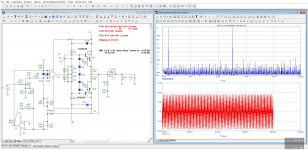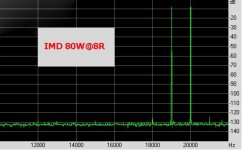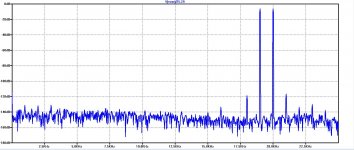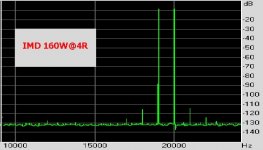Finally: 1k @ full power. Still below 1 ppb. Characteristic of class AB THD vs V(in) remains obvious as well.

Not my data. As shown in the posted link Samuel Groner did and Jan Didden confirmed better than -160dB.So where did you find the -180dB ?
I have been working in enough different disciplines for familiarity with any kind of units so read "on the fly". For me, the numbers in Volt are quite handy as the ripple voltage of the required power supply is Volts too so I immediately know the requirements when knowing the amp's PSRR.
Expressing 1 ppb (V/V) in % requires (too) many zeros but is 10^-9, -180 dB.
Expressing 1 ppb (V/V) in % requires (too) many zeros but is 10^-9, -180 dB.
Samuel Groner did not mention this in his paper, that’s why I asked.Not my data. As shown in the posted link Samuel Groner did and Jan Didden confirmed better than -160dB.
Hans
O.k. Thx
I’ll try to get this paper.
It must differ from the paper in Jan’s Linear Audio.
But In general I wonder what can be the use of an amp having its THD way below the noise level.
Hans
I’ll try to get this paper.
It must differ from the paper in Jan’s Linear Audio.
But In general I wonder what can be the use of an amp having its THD way below the noise level.
Hans
Is that the switching area ?Characteristic of class AB THD vs V(in) remains obvious as well.
Did you try class A ?
Indeed, it's the switching area but also the area where "internal" correction starts. That means, increasing the quiescent current increases distortion there and class A will not improve THD @ P(out)max. But it's only part of the story. Running IMD with the proper frequencies often gives a better idea of what the ears can expect. Hence my preference for 950 Hz and 11.5k (equal amplitude). For my purpose, anything below 100 dB at full power is defined as "good. enough". In the case of IMD, the improvement of class A is remarkable: as a figure of speech, "cutting the grass". So the question is "which one will sound better?
Attachments
Are you sure you are not mixing this up with Samuel Groner's low noise laboratory-grade measurement amplifier in LinearAudio 3?O.k. Thx
I’ll try to get this paper.
It must differ from the paper in Jan’s Linear Audio.
But In general I wonder what can be the use of an amp having its THD way below the noise level.
Hans
You may be using distortion-free components in MC12, since your plots are way beyond reality.
Everything beyond -130dB for a main amp is most doubtful.
LTSpice did a much better job for my main amp.
See simulated versus measured IMD, for 8R and for 4R at resp 80Watt and 160Watt.
Hans
Everything beyond -130dB for a main amp is most doubtful.
LTSpice did a much better job for my main amp.
See simulated versus measured IMD, for 8R and for 4R at resp 80Watt and 160Watt.
Hans
Attachments
Now with reduced gain of 16 dB. I could compensate that with a modified TVC that has 12 dB gain.

You are right, I didn't know this AES paper.Are you sure you are not mixing this up with Samuel Groner's low noise laboratory-grade measurement amplifier in LinearAudio 3?
It differs from the LA article in that gain is here 0dB versus a gain of 60dB.
at 1.1nV-rtHz input noise and 7.746V out, noise level is down at 20log(7,764/1.1nV) = -196dB referred to 7.746 Volt input.
So either his measuring gear limited the noise to -180dB and/or he used a much wider filter bin width.
And THD was indeed below noise so in that case < -180dB for this unity gain amp.
Hans
- Home
- Amplifiers
- Solid State
- Musings on amp design... a thread split





